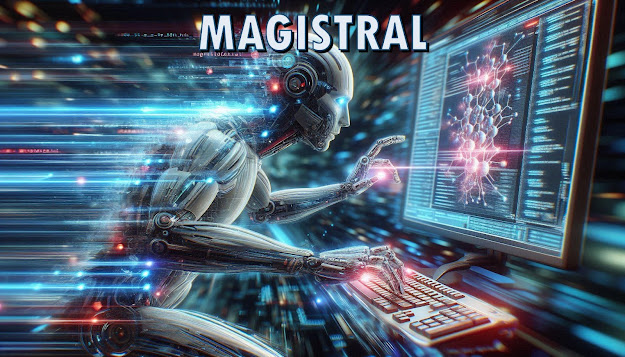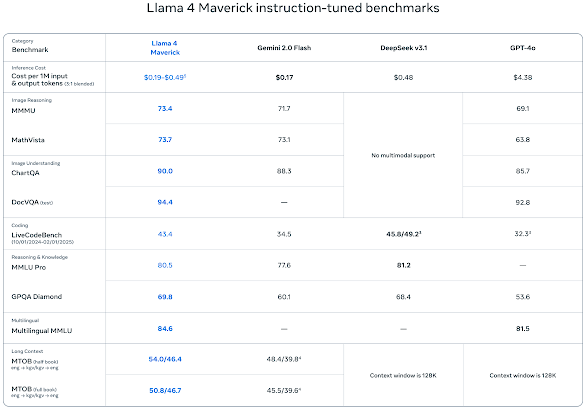Introduction
From basic task automation to sophisticated cognitive processes that are starting to simulate human deliberation, Artificial intelligence has traveled an astonishing distance. In this fast-paced progress, we've seen the emergence of AI agents and systems that are not only processing information but are now beginning to reason about it. This transition from predictive text generation to systematic step-by-step problem-solving is the turning point in efforts toward artificial general intelligence.
For decades, the development of AI reasoning models has been hindered by major obstacles. Early models tended to be too general and therefore lacked the in-depth specialization needed for domain-specific issues, rendering them expert generalists in an increasingly expert-requiring world. They also lacked transparency, presenting conclusions from a 'black box' that made it hard to trust or audit their outputs—a major hurdle to adoption in high-risk, regulated domains. In addition, authentic multilingual reasoning was still lagging behind, and most models were unable to keep the consistency of their logic intact when they worked outside of English.
It is here, at the point where progress meets challenge, that Mistral AI presents its revolutionary model, Magistral. Magistral is not an incremental advance; it is a direct answer to these enduring constraints, designed to deliver profound expertise, provable transparency, and solid multilingual flexibility, thus advancing the boundary of what is possible for AI.
What is Magistral?
Magistral is a pioneering model of reasoning thoroughly crafted to dominate domain-specific, clear, and multilingual reasoning. It is essentially designed to supercharge human thinking, dealing with complex problems with a degree of precision and in-depth consideration that is the new benchmark.
Model Variants
In acknowledgment of the varied requirements of the AI community, Mistral AI published it in two different forms: Magistral Small, a high-end 24-billion parameter version, and Magistral Medium, a yet more powerful enterprise-oriented model. This two-releases approach emphasizes a central philosophy of facilitating real-world reasoning while encouraging a loop of iterative improvement based on community and enterprise inputs.
Key Features of Magistral
Magistral separates itself with a set of advanced features engineered for better, real-world reasoning:
- Transparent, Step-by-Step Reasoning: Optimized for multi-step reasoning, the model gives a transparent, easily traceable thought process in the user's own language, so its conclusions are completely auditable and simple to trust.
- Unparalleled Velocity and Productivity: Magistral Medium is capable of token throughput as high as 10 times faster than most others, particularly with "Flash Answers" in the Le Chat interface, and facilitating real-time reasoning at a usable scale.
- High-Fidelity Multilingual Reasoning: One of the key design principles is to reason natively in many languages, such as English, French, Spanish, German, Italian, Arabic, and others, so that the chain-of-thought and the final answer can be preserved in the user's language.
- Unexpectedly Robust Multimodal Capabilities: In a dramatic development, Magistral achieves strong performance on multimodal tests even though it was only trained on text-only data, indicating its deep thinking mechanism can transfer cross-data types uniquely.
Capabilities and Use Cases of Magistral
Magistral's deep capabilities open up uses where accuracy, depth, and clarity are an absolute requirement:
- Problem-Solving: Perfect for any task requiring intensive thinking and detail beyond ordinary LLMs, from sophisticated financial projections to complex planning of software development.
- Business Strategy and Operations: Business-oriented, it can address sophisticated tasks such as multi-factor risk modeling or determining optimum logistics under diverse constraints.
- Auditable AI for Regulated Industries: Lawyers, finance professionals, and healthcare providers can use Magistral's traceable reasoning to satisfy strict compliance needs since each conclusion is able to be proven step-by-step.
- Advanced Code and Systems Engineering: The model shines at augmenting development pipelines, from high-level architecture planning to sophisticated data engineering work requiring external tools and APIs, and thus serves as a formidable tool for constructing agentic systems.
- Creative and Content Partnership: Initial trials find it to be a first-rate creative collaborator, able to create coherent and, when wanted, wonderfully quirky stories for storytelling and content purposes.
How does Magistral Work?
Magistral's superior performance rests on a highly advanced technical architecture based on its forebears, Mistral Small 3 and Mistral Medium 3. As the two models are shown in the below Figure 4, the two models took different training paths. Magistral Medium was trained using an RL-only method from scratch, representing a major change from the ones based on distilled data from large models.
By comparison, Magistral Small was 'cold-started' through Supervised Fine-Tuning (SFT) prior to being further augmented with the same RL process. At the center of this RL phase lies a highly scalable pipeline utilizing an adapted version of the Group Relative Policy Optimization (GRPO) algorithm. Technical optimizations, including the removal of KL divergence and utilization of a 'Clip-Higher' approach, were performed to loosen the training constraints and make the model explore better.
A central part of the training involves the reward shaping, where model responses are compared against four dimensions: format, correctness, length, and consistency of language. Reward is given specifically for mathematical correctness or code correctness, while a soft penalty is applied to overly long responses. To maintain multilingual fidelity, another reward is provided if the thinking process and final response continue to be consistent with the input language of the user.
The whole process is orchestrated by a distributed framework that controls Trainers, Generators, and Verifiers in a loop. Generators generate text completions, which are verified by Verifiers using reward criteria and passed on to Trainers to fine-tune the model. One of the notable innovations of this pipeline is that generators run asynchronously, which enables them to run at full throughput without holding up the trainers, maximizing efficiency and performance.
Performance Evaluation
Magistral's performance on a variety of metrics cements its place as an important emerging leader in the space of reasoning AI.
Magistral Medium registered a remarkable 73.6% (pass@1) on the AIME-24 benchmark, a whopping 50% improvement in accuracy from its base model, Mistral Medium 3. With majority voting, its accuracy on AIME-24 jumped to 90.0%, putting it strongly on par with models such as DeepSeek-R1-Zero. In addition, on the text portion of Humanity's Last Exam, Magistral Medium scored 9.0, a bit better than DeepSeek-R1. It also performed strongly on other tests, including GPQA and LiveCodeBench v5.
Magistral Small also performed well, attaining 70.7% on AIME-24 and 83.3% using majority voting. Interestingly, the combination of SFT on reasoning traces followed by RL training for Magistral Small resulted in a gain of more than 5 points on different benchmarks over SFT or RL individually. This flatly contradicts earlier research conclusions claiming RL alone may not significantly improve smaller models.
In addition to quantitative metrics, Magistral's RL learning on text-only data surprisingly retained and even extended its multimodal comprehension, instructional following, and function calling abilities. The model also displayed excellent cross-domain generalization, with strong performance on tasks that were outside its main training domain (e.g., code performance resulting from math-only training).
For multilingual tasks, although Magistral Medium kept high-fidelity reasoning across different languages, it experienced a minimal performance drop of 4.3-9.9% on multilingual versions of the AIME 2024 benchmark from its English performance. Yet again, this drop is similar to that of the base model and most importantly, the model performs both its reasoning and final answer in the input language.
How to Use and Access Magistral
Mistral AI has made Magistral widely available to developers and businesses as well. Magistral Small is an open-weight model that is available under the permissive Apache 2.0 license, downloadable on Hugging Face. It is resource-hungry enough to fit into one RTX 4090 GPU or one 32GB MacBook when quantized, making strong reasoning within reach for solo developers. A preview release of Magistral Medium has been placed in Mistral AI's conversational platform, Le Chat, and through API on La Plateforme. It also includes integration in large cloud marketplaces such as Amazon SageMaker, IBM WatsonX, Azure AI, and Google Cloud Marketplace.
Limitations and Future Work
Mistral AI is open about Magistral's current limits. A real-world limitation is its context window; though it can handle 128k tokens, performance is likely to suffer on tasks that need strong focus after 40k tokens. As mentioned, there is also some drop in performance on translated reasoning tests versus English, which suggests an area of future optimization. In the future, Mistral AI aims to break new ground on what's achievable with RL. Their research agenda also involves investigating more ideal loss functions, realizing the promise of bootstrapping models on their own reasoning traces, and extrapolating these techniques to advanced tool-use, effortless multimodality, and the creation of more powerful AI agents.
Conclusion
Magistral is a more-than-incremental advance; it's a root change in AI reasoning. Its pioneering, RL-driven training is a technical innovation, demonstrating that compact models can reproduce premier, explainable performance. For accountability-driven industries, it provides the auditable, step-by-step reasoning that elevates AI from an impenetrable 'black box' to trusted collaborator. Magistral presents an interesting vision for a future in which AI doesn't merely deliver answers but works in cooperation with a quality of lucidity that inspires true trust and genuinely adds to our own capacities. Mistral AI is certainly at the vanguard.
Source
Blog: https://mistral.ai/news/magistral
Tech document: https://mistral.ai/static/research/magistral.pdf
Model: https://huggingface.co/mistralai/Magistral-Small-2506
Disclaimer - This article is intended purely for informational purposes. It is not sponsored or endorsed by any company or organization, nor does it serve as an advertisement or promotion for any product or service. All information presented is based on publicly available resources and is subject to change. Readers are encouraged to conduct their own research and due diligence.





















